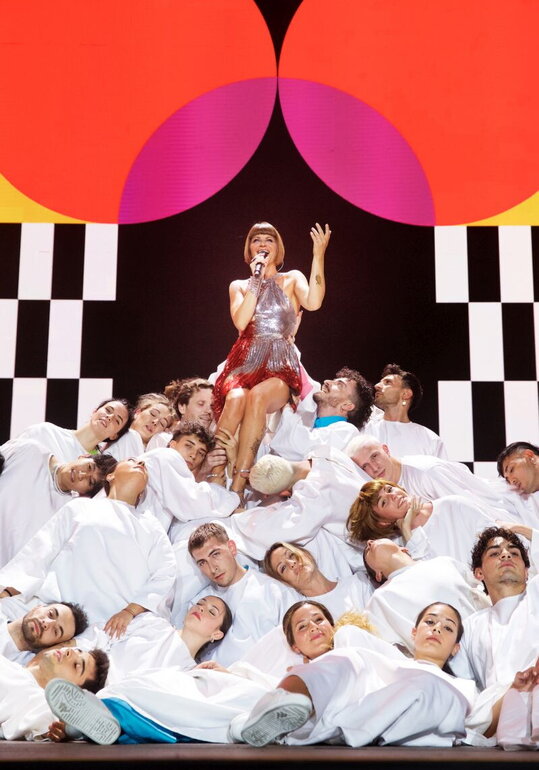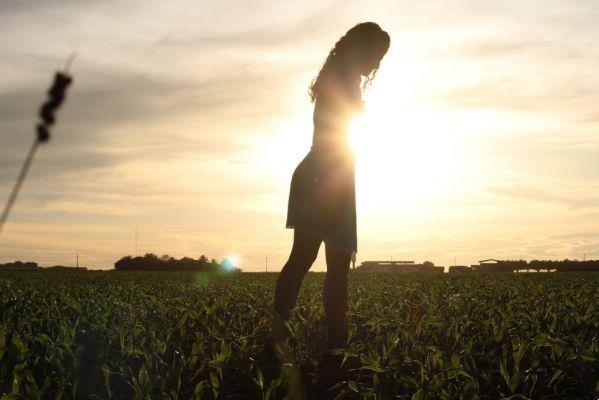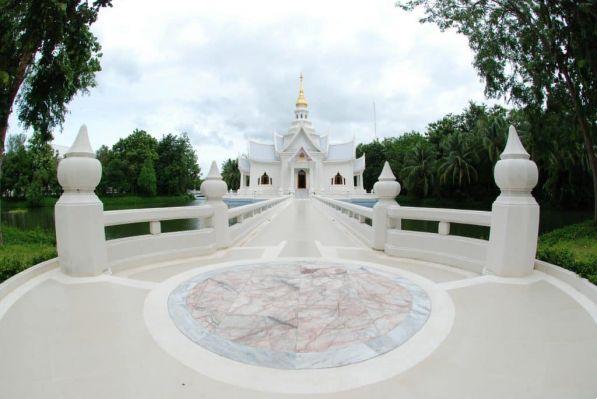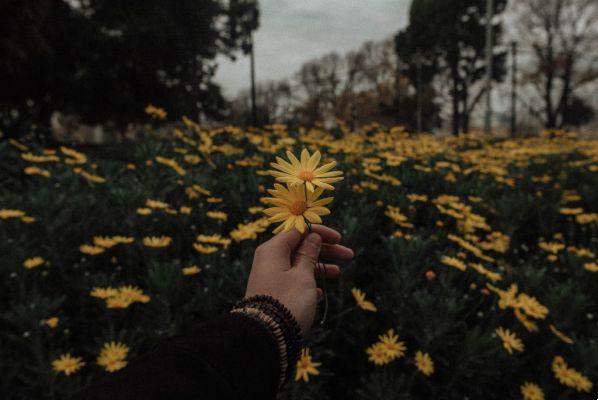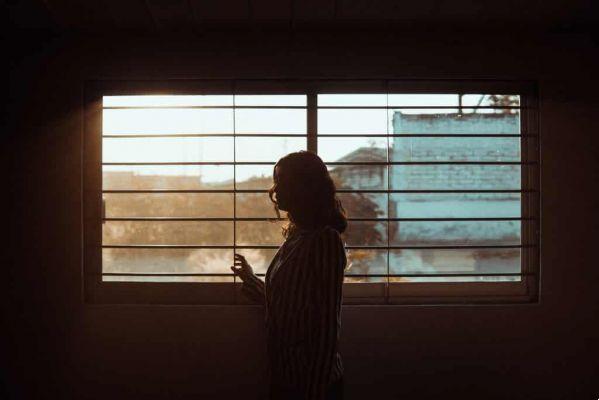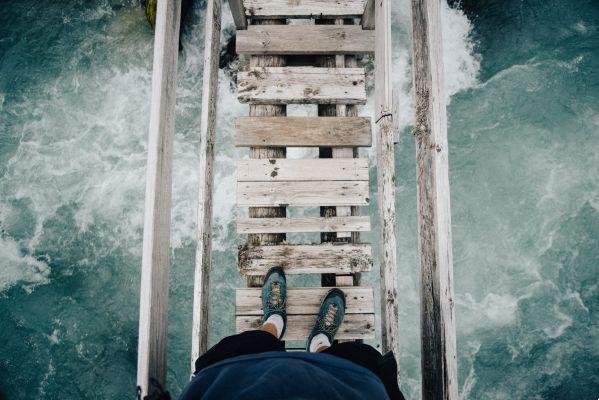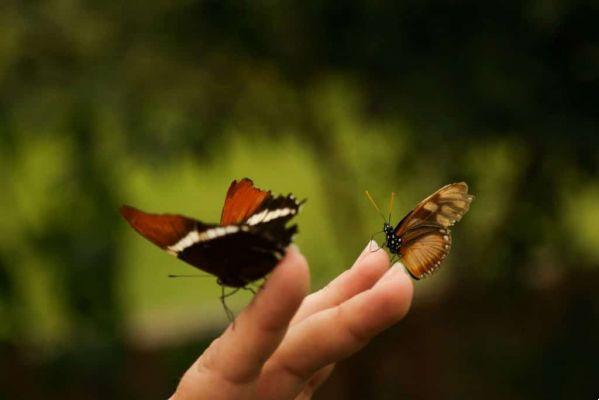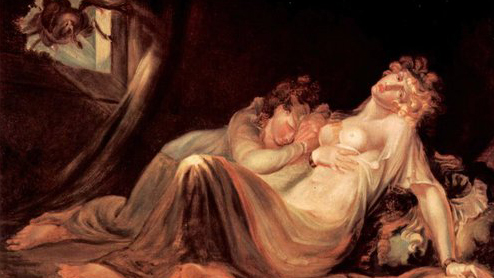Pilgrimage, a route of encounters
The word peregrinar comes from «lat[im] peregrīno and the verb peregrinar means «to walk in pilgrimage through; go on a pilgrimage” or “walk through (distant lands); travel". Perhaps for practitioners there is a dichotomy in the use of the terms pilgrimage and pilgrimage. The first would be more used by those who want to walk free from the religious issue, such as trekking, and pilgrimage serves those who have their faith put to the test and usually make their sacrifice in the name of a promise.
Being one or the other, the act itself requires physical sacrifice, invites reflection and leads to an encounter, whether with oneself or with anyone from this plane or another. All this due to the intensity of the experiences that a long journey makes possible. There is even an early study on the effects that contemplative paths have on well-being and improving quality of life.
I've done several walks and I don't bother to classify them, but many of them were short, up to 9 kilometers in one day, interspersed many times with car rides on the following days. Therefore, I dare not say that they were pilgrimages. In addition, my motivation was tourism and the “sports” practice of walking.
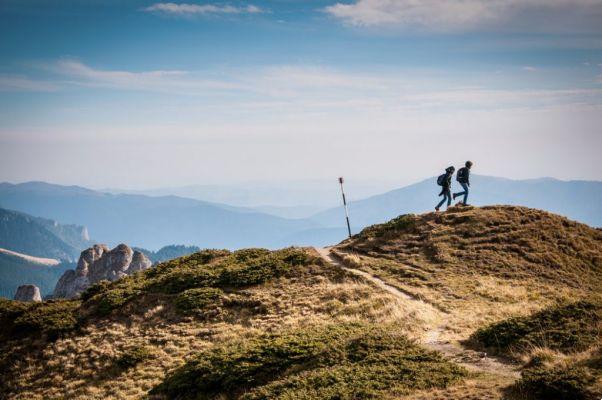
In July of this year I made what I consider my first pilgrimage, as I walked 219 kilometers in 11 “almost” consecutive days. I did the so-called Caminho do Sol, whose route is in the interior of São Paulo. I wrote my path based on the meaning of “going to distant lands”, while going inside myself, looking for an impetus to move forward and let my pain heal in the form of longing for the loss of my mother.
The Caminho do Sol was inaugurated in 2001 by its creator, José Palma, after his experience on the Camino de Santiago de Compostela. The path is 241 kilometers long, passing through the following cities: Santana de Parnaíba, Pirapora do Bom Jesus, Cabreúva, Itu, Salto, Elias Fausto, Capivari, Mombuca, Arapongas, Monte Branco (rural area of Piracicaba), Artemis (urban area of Piracicaba ) and Águas de São Pedro.
In this case, there is no change, either in duration or script. There are 12 cities, 11 days, with an appointment on a Tuesday night for final adjustments, leaving for a walk effectively on Wednesday early and arriving on a Saturday at lunchtime. There is also a café with prose on Sundays for those staying in the city of arrival (Águas de São Pedro).
The act of pilgrimage did not come about yesterday, it has been around since the XNUMXth century, if we are to consider the first records of the Camino de Santiago. The European path can be from 100 to 800 kilometers long, some do up to 1000, depending on the point of departure and arrival. In it, each one can define the stretch, the landscape and the length of stay they want. There are many paths within the same path, always on European soil, known as French, Aragonese, Portuguese and the Northern Way. The Camino de Santiago has been around for 803 years and has a strong connection with religion.
Many pilgrims make the Camino del Sol as a training course for the one in Santiago. The stretch traveled here only counts as training and not as a stamp for the Spanish passport, and depending on the distance chosen to do in Santiago, it won't even mean the middle of the way. The section of Florianópolis, inaugurated this year, is worth a stamp, as it received the support of the Cathedral of Compostela.
Perhaps pilgrimages are in fashion and in the media these days because people are increasingly looking to get out of their daily routines, rules and stress to find answers within themselves. Like meditation and spiritual retreats, pilgrimages allow a certain amount of isolation from the vices of routine, people, electronic equipment, etc.
The motives of a pilgrim, whether beginner, amateur or veteran, can be diverse, each pilgrim chooses and writes his way. Literally, there is a lot of rock on this path, the little boulders and the personal rocks that everyone wants to remove from their life.
The silence and the staff are the most frequent companions in these walks, as the shoes can vary and the backpack you can send (if you pay extra). After all, people can walk up to 12 hours a day, giving thanks for an achievement, asking for healing or a job, praying, crying, talking to God or someone who has left.
I don't know how to give tips on the other long paths that exist here in España or outside it, as I only participated in the Caminho do Sol, but it is easy to find other options on the internet, such as the Caminho da Fé, the Missions, the Luz, among others. others. The best way to prepare is by watching the lectures in person or online, reading, talking to those who have already done it, getting physically ready and having the correct equipment. There are even pilgrim associations, such as ACACS-SP and AACS España.
my perceptions
Everything is an opportunity to learn on this path: tolerance, humility, respect, gratitude. Words abound. Of course, in life we can learn lessons from every small gesture and you don't need to be on the fringes of society and routine to think about it and change, if that's the case. But in an activity like this, the messages and invitations to reflection are explicit and happen all the time, so this intensity facilitates understanding.
I had several. For example: on the 3rd day, after walking 52 kilometers, I stopped the walk and did a stretch by car because I planned poorly and my boot was not suitable. I stopped for 1 day not to abandon the journey. So, of the 241 kilometers, I managed to do 219 and only concluded because a colleague lent me a paper that stayed with me until the end. I managed to finish along with the group, which dwindled along the way. We started at 12 and ended up being 9.
We did the route in winter, so we faced the low temperatures of July, around 5°C, until the hottest time of the lunch hour of a dry period, around 30°C. There was fog, chill and sun, but we didn't get rain for a single day. That is, different temperatures for which we had to go out dressed accordingly or stop on the way to take off a shirt.
The terrain varied between asphalt, dirt, sand and gravel. Around us, we had cars on the stretches of road, tractors and rural trains, in addition to plantations, cattle slaughterhouses, bridges, rivers, streams, lots of sugarcane, cows, chickens and dogs. The route alternated straights, descents and ascents. Let's say no “pirambeira”, but some strenuous ascents and tiring descents.

We walked an average of 20 kilometers a day, some days more and some days less. The shortest stretch was 14 kilometers and the longest was 28 (this is what I didn't do as I was in pain). On the way there were stops at commercial establishments, where we bought water and other things and used the bathroom, when there was time to wait to get there. There were stops on the way to collect the famous stamps and fill the pilgrim's passport.
Sometimes we were greeted by surprise by the so-called clouds, which looked like an oasis with juices and snacks, organized by the volunteers of the Way.
The sensations along the entire route are many. We experience tiredness, which sometimes comes painful, sometimes encouraging, a lot of joy, a lot of sadness, but in the end comes the best feeling of all: that of accomplishment, that of endless peace.
The date
What I call an encounter is the answer to an individual quest. It can be given other names, such as self-knowledge. Everyone can give the “nickname” they want, but what matters is the peace that comes later. After all, with the end of the experience comes the rush of adrenaline and endorphin, neurotransmitters of unconditional strength and well-being, which trigger a mechanism of struggle for survival and that gives us the willingness to move on.
In addition to the physical, we have the spiritual, many hours dedicated to talking with oneself, with loved ones or with spiritual entities. We left between 7 am and 8 am and walked until 13 pm/14 pm, depending on the pace of each one and the number of kilometers in each section. It was impossible, at the end of 11 days in this tune, not to feel a special relaxation, a balance.
There are many tips to give about equipment, accommodation, expenses, but they are easily found on the websites of the tours themselves (see below). Here, the proposal was to tell a little about the history of pilgrimages and draw attention to the opportunity for “meeting” they can give us. I hope it infected you!
Written by Silvia Prevideli from the Eu Sem Fronteiras Team.





